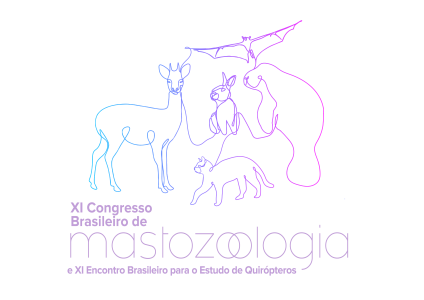Dados do Trabalho
Título:
ACTIVITY PATTERN OF THE ENDANGERED ELIAS ATLANTIC SPINY RAT TRINOMYS ELIASI (PESSOA E REIS, 1993)
Resumo:
Trinomys eliasi is a rare echymid rat endemic to The Atlantic Forest and classified as near-threatened and decreasing in population by the IUCN. Its distribution is restricted to a few lowland forests and “restingas," vegetational associations that suffer the greatest human impacts in Rio de Janeiro (RJ), Brazil. There are few studies about the species and some of them indicates that its populations are isolated from each other. This rodent is described as solitary and nocturnal, but there are no empirical studies about your natural history that support this. One important aspect of a species natural history, associated with the temporal niche, is the activity pattern, which reflects strategies to maximize foraging and reproduction and minimize the risk of predation and interspecific competition. In this study we monitored the activities of T. eliasi by camera traps, providing novel information on its activity pattern and evaluating the correlation with the activity pattern of the marsupial Didelphis aurita, a potential predator frequently recorded in the area. We installed 12 camera traps (Bushnell Trophy Cam HD) in the legally-protected Reserva Biológica União (ReBio União, RJ, Brazil), between July 2019 and April 2020. We analized 2,428 video records (30s length). These include 585 videos of T. eliasi, and 156 of D. aurita, all of which were at night or twilight hours. To ensure sample independence, we considered all records of a species within the 1h period as a single one. The activity pattern of T. eliasi is bimodal, with peaks at the most twilight hours (3 am to 5 am; 6 pm to 8 pm), while D. aurita has one peak, around 12 am. We performed a Wald Test comparing the activity pattern of both species, however, no significant differences were found (p=0.057). If D. aurita had an important predation impact on T. eliasi, a negative correlation between the two patterns of activity would be expected, with the times of greatest activity of T. eliasi concentrated in the times of lowest activity of D. aurita. Our study brings new information about the temporal niche of T. eliasi and its relation with a predatory species that forages around the burrows occupied by this spiny rat, helping to fill the large knowledge gap on its natural history.
Keywords: Natural History, Temporal Niche, Echimyidae.
Funding agency: Coordenação de Aperfeiçoamento de Pessoal de Nível Superior (CAPES)
Financiamento:
Área
Ecologia
Autores
Amanda de Abreu Braga, Carlos Ramón Ruiz-Miranda, Fábio Abdel Azevedo Khaled Rahman, Juan David Rojas Arias, Pablo Rodrigues Gonçalves, Caryne Braga
